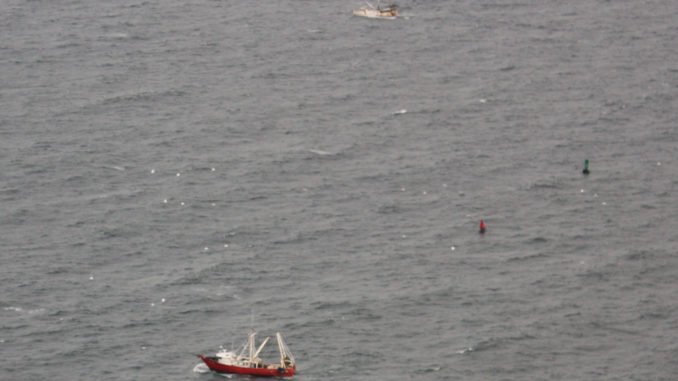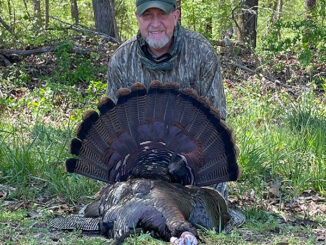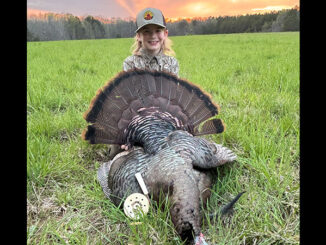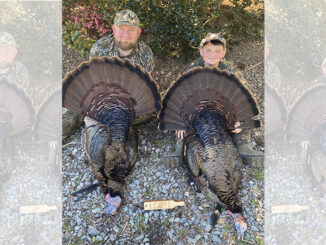
The North Carolina Marine Fisheries Commission reaffirmed its commitment to the status quo regarding management of striped bass and spotted seatrout at its meetings last week in Raleigh.
But things may be slowly changing at the top level of the commission, if new proposals and new appointed commissioners are any indication of advancements in conserving these (and other) fish stocks in the future.
At Raleigh, the MFC approved a proposal put forth by member Mikey Daniels, who owns a Wanchese-based trawler fleet, to allow commercial trawling for striped bass during 2012.
The agency also voted to give the North Carolina Division of Marine Fisheries until Nov. 2-4 to put forth a second Fisheries Management Plan for spotted seatrout that would meet criteria set forth by state legislative Session Law 2010-13, crafted in 2010.
“The General Assembly tells (Marine Fisheries) what is to be in a FMP that we establish or modify,” said MFC chairman Rob Bizzell of Atlantic Beach. “At our Nov. 2-4 meetings, we will adopt (a trout FMP), and it must show whether (its provisions) will end overfishing (of specks) in two years’ time.”
But Bizzell said DMF Director Louis Daniel could wait until November 2013 to implement a new trout FMP.
The DMF’s previous trout FMP wouldn’t have ended overfishing in two years (which would require at least a 57-percent catch reduction the DMF was reluctant to implement). That original FMP was being crafted while the General Assembly was working on (and changing the provisions of) Session Law 2010-13.
The MFC discovered, to its dismay, that SL 2010-13 required a two-year window to end overfishing, which its trout FMP didn’t create. So the DMF tried to get its speck plan exempted from the legislative rule, but a bill to do that received no legislative support.
Thus the need for a new trout FMP by the DMF.
“It’s very complicated,” Bizzell said. “Now, Louis (Daniel) could do a proclamation the next day (after the November MFC meetings), or it could be done one year, 11 months and 30 days later.”
Bizzell said the MFC didn’t officially discuss whether or not Daniel should implement a trout FMP on Nov. 5 or later.
“We didn’t take a position,” Daniel said. “It might have been mentioned, but I don’t know what the commissioners will do. It’s difficult to predict what they’ll do.”
Currently, spotted seatrout recreational catch rules include a 14-inch minimum size and a bag limit of only six fish per day, of which no more than two trout can exceed 24 inches.
A new FMP could drop that daily limit to four or even two fish.
Commercial fishermen currently may gill net trout from 12:01 a.m. Monday until midnight Friday all the 14-inch or larger specks they want.
Obviously, the trawling and trout recommendations will delay implementation of immediate rules to end overfishing. But new proposals to take effect in two years could portend beneficial management strategies in 2013 and beyond.
Following two major fish kills caused by trawlers in the Oregon Inlet area this past winter, a proposal was on the table at Raleigh to eliminate trawling as a means of catching these fish and allowing only hook-and-line fishing by commercial anglers.
However, the MFC voted for a Mikey Daniels proposal that included:
• a beach seine season starting Dec. 1 until that gear’s poundage quota (166,000 pounds) is reached;
• beach seine netters would be able to accept over-daily-quota catches from trawl and gill-net fishermen;
• gill netting would open Jan. 1 and remain open until that gear’s poundage quota is reached. Gill netters would be allow 50 fish per vessel and could transfer excess fish to other netters at sea (they could make transfers at the dock if sea conditions are rough, and the Marine Patrol is contacted). This fishery would have to close Feb. 15, 2012, by federal law because of large-mammal (i.e. dolphin) interactions with the nets.
• trawl season would open no later than Jan. 15, or immediately after the gill net season closes;
• during open seasons, netting of ocean stripers would be allowed Monday through Thursday with a 100-fish-per-vessel limit;
• over-the-daily-limit catches could be transferred to other vessels.
Commissioner Anna Beckwith, wife of Beaufort fishing guide George Beckwith, also presented a proposal for future seasons, which could include 2012-13 if DMF can develop the format soon enough.
Details of her plan included:
• limited entry to the striper commercial-netting seasons to individuals with a history of catching ocean striped bass;
• the entire state quota would be open to all fishing methods (seine, gill net, trawl) with each gear managed by defined season lengths and trip limits;
• transfers of excess fish would be allowed between permit-holders at sea or on the dock at any time.
• netters also could use hook and line (rod and reel) as gear.
• sale of stripers from for-hire (guided recreational) trips would be illegal.
Beckwith said this plan would manage stripers proactively for the next five to 10 years.
“We keep pushing (wise management) proposals back and back and back,” she said in a Wilmington Star-News story.
Her plan was met with opposition from some MFC commissioners.
Bradley Styron, a Cedar Island commercial fish dealer, said to the Star-News that “adding another fishery and shoving things down people’s throats is not the way to do it.”
Beckwith was elected vice-chairman of the MFC, which swore in three new members — Chris Elkins (recreational fisherman) of Gloucester, Allyn Powell (scientist) of Beaufort and Joe Shute (recreational fisherman/guide/tackle store owner) of Atlantic Beach.
The MFC also decided at the meeting to open fall gill netting for flounder in Pamlico Sound on Sept. 19 with some restrictions. It also will open southern Core Sound, Back Sound and North River on Oct. 1 to fall flounder netting.
The Pamlico Sound Gill Net Restricted Area initially will open seven days a week under the same regulations and permit requirements as previous years.
Under these regulations, the Pamlico Sound Gill Net Restricted Area must close to all large-mesh gill nets for the remainder of the fall fishing season if the fishery has interactions with three live or two dead Kemp’s ridley sea turtles. If there is an interaction with a Kemp’s ridley sea turtle, Daniel will reduce fishing days to six.
If there is a second interaction with a live Kemp’s ridley, the number of fishing days will be reduced to five. The MFC authorized Daniel to implement stricter regulations, if needed.





Be the first to comment